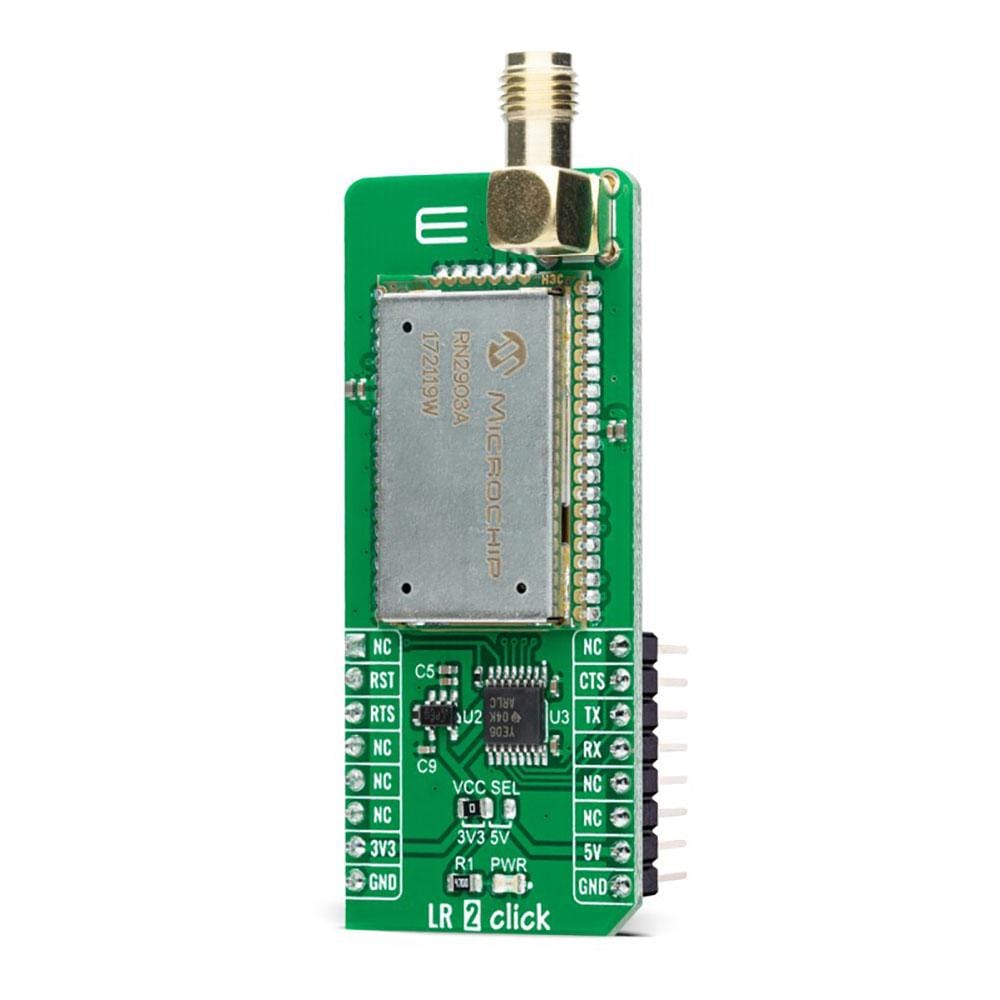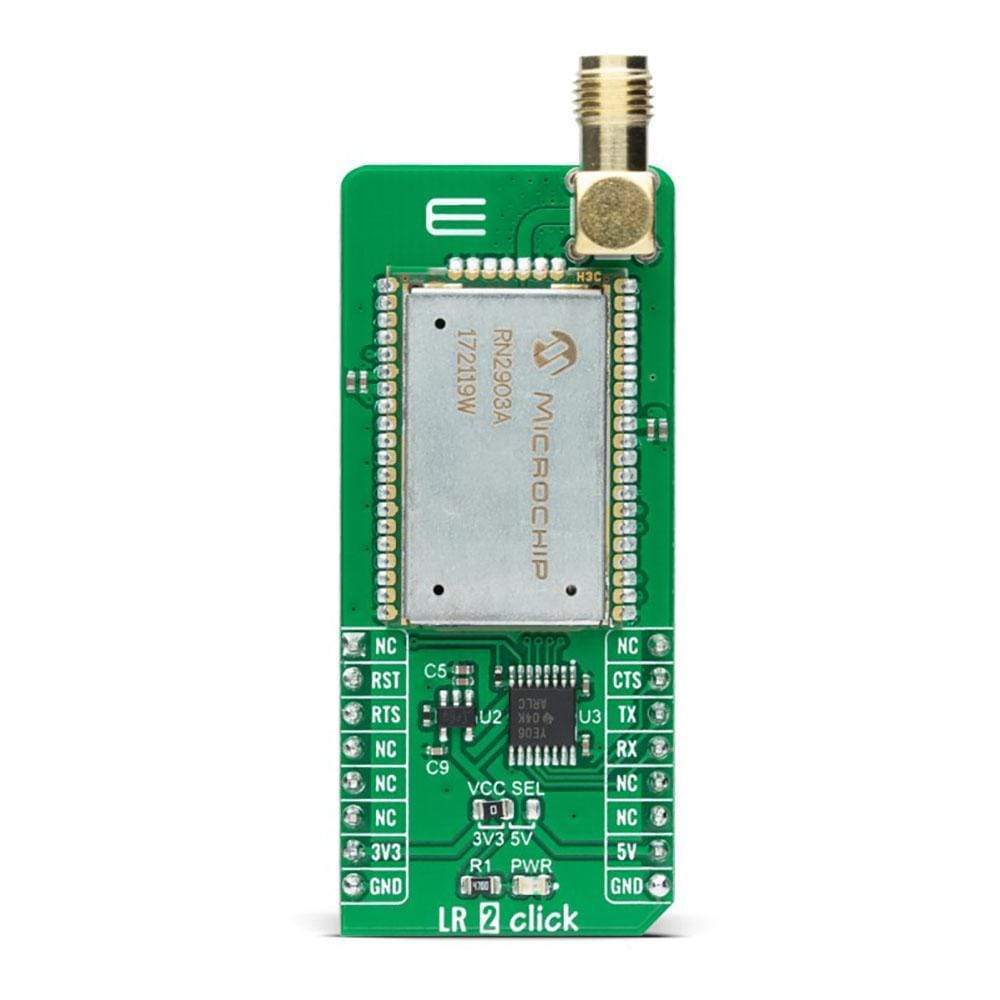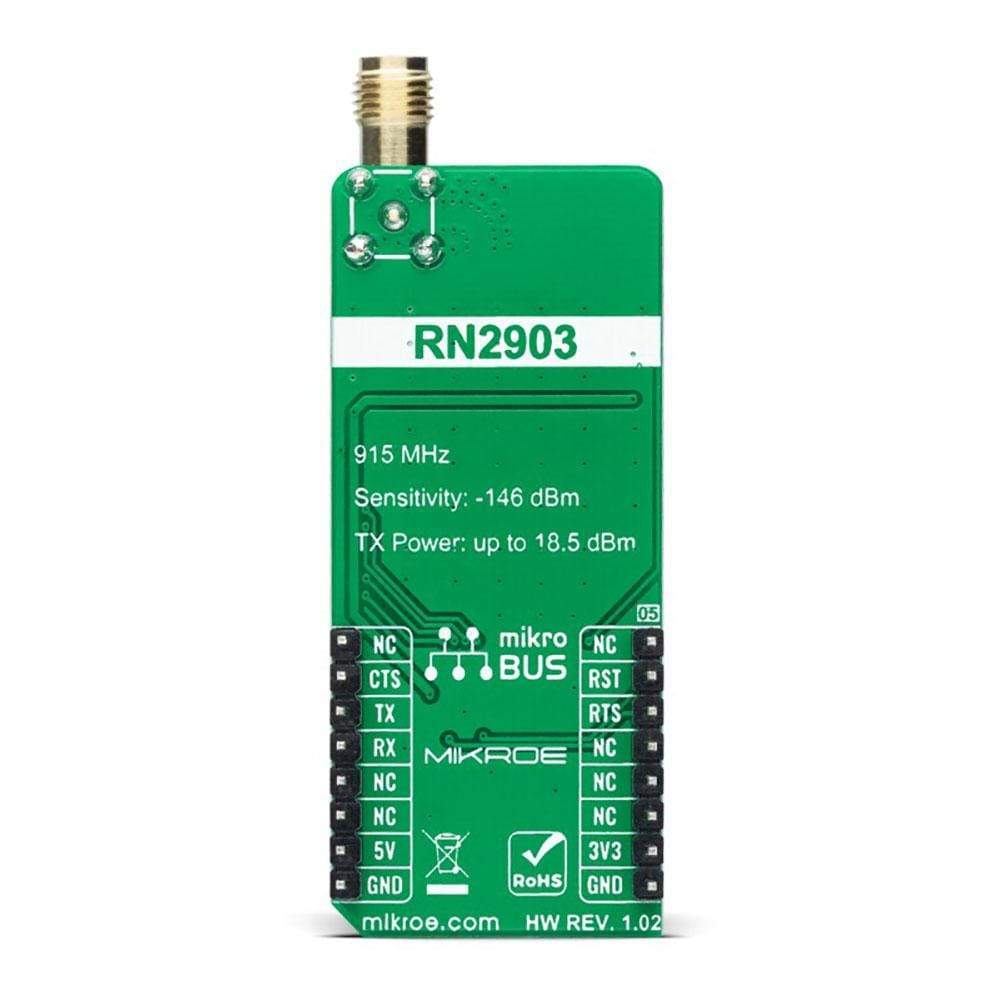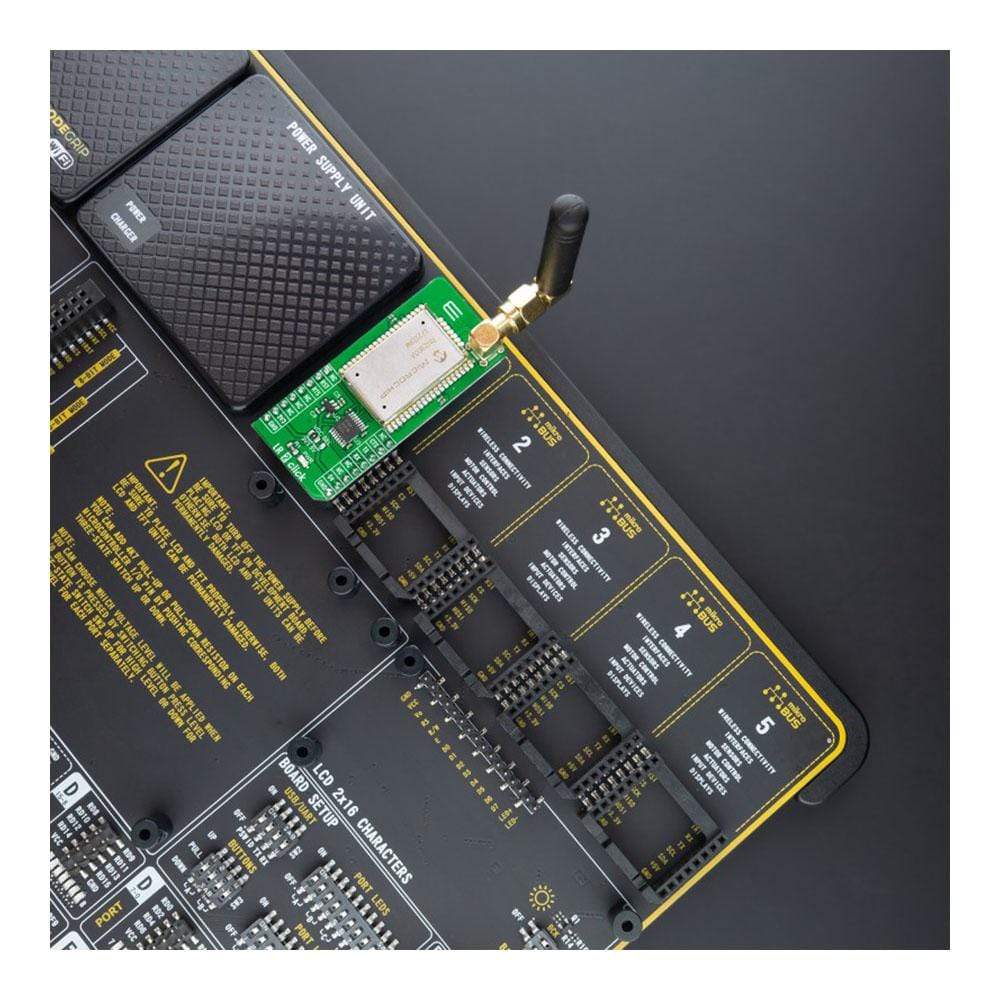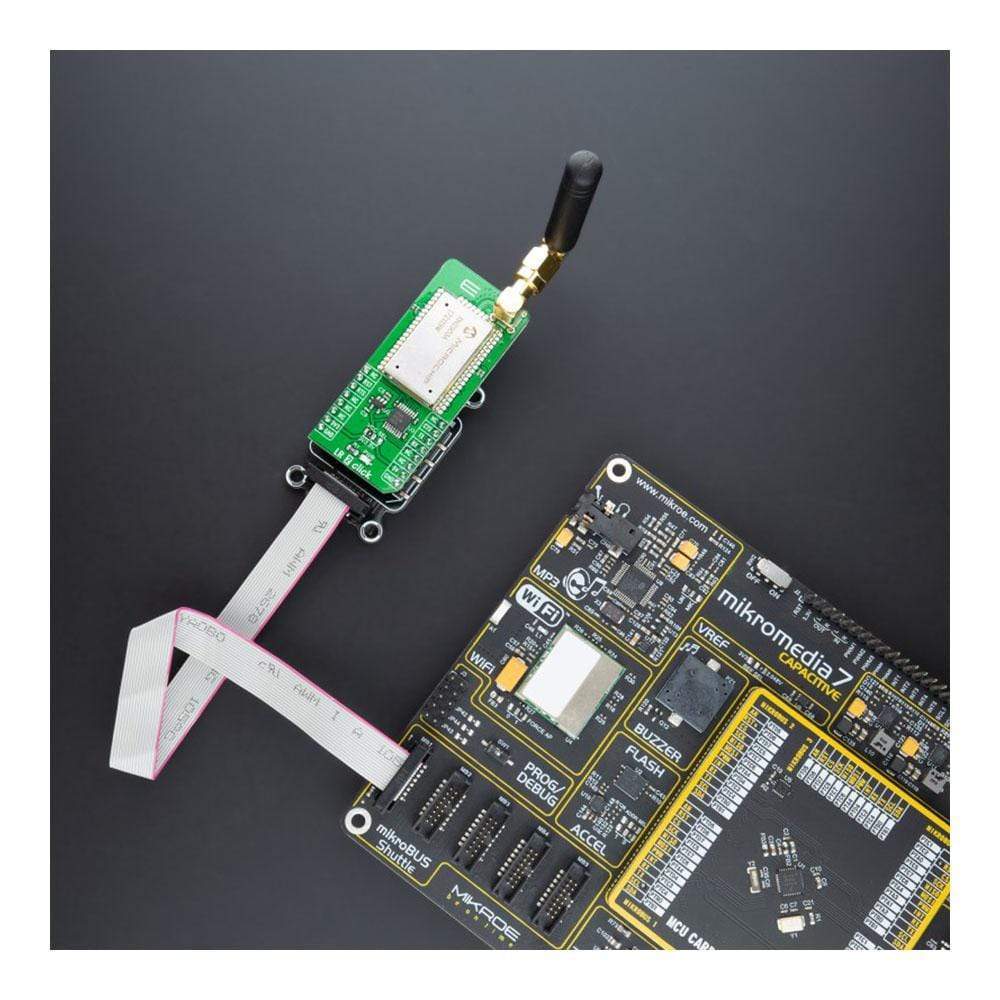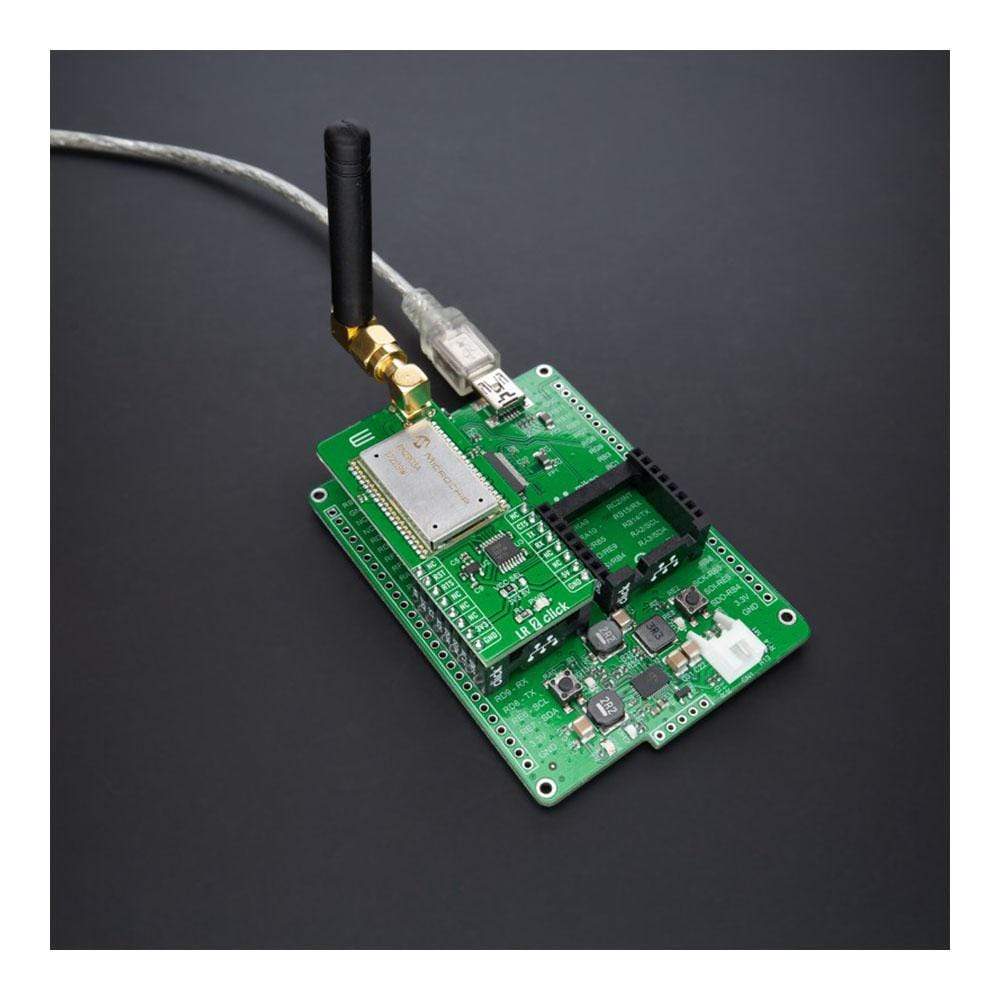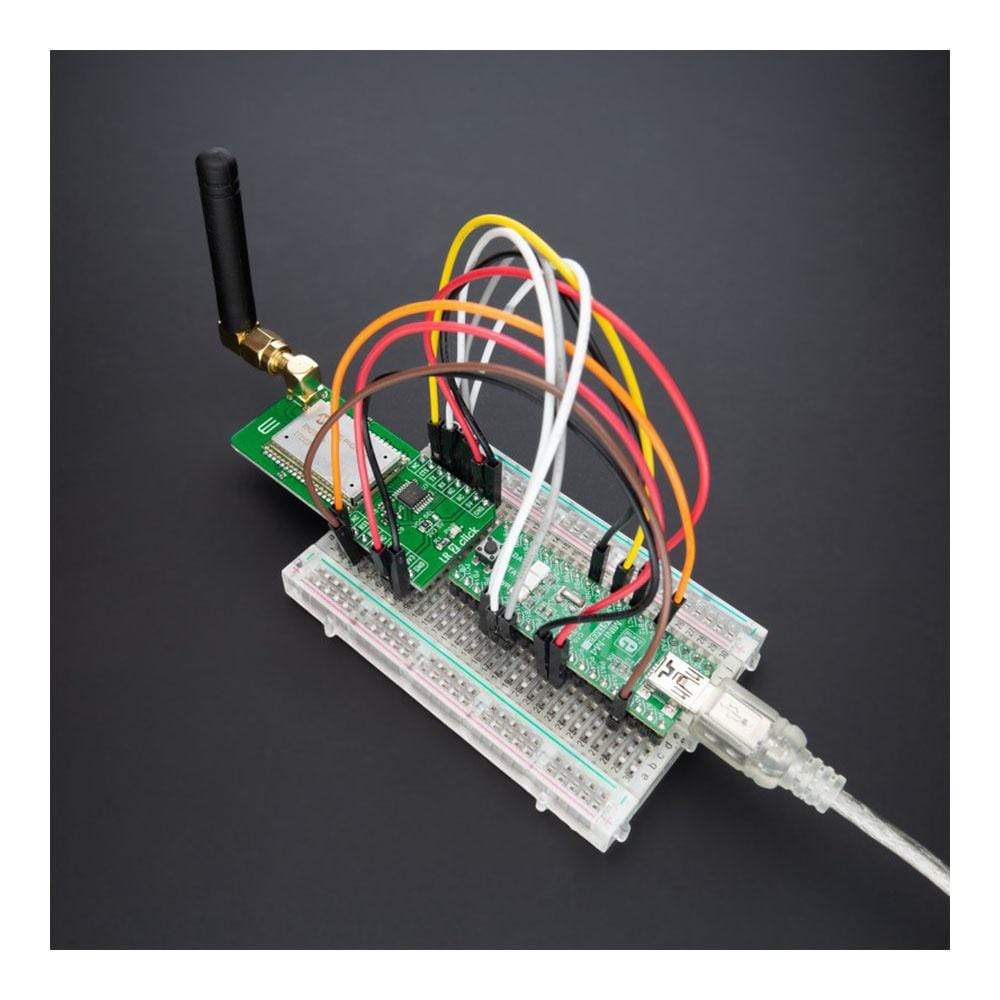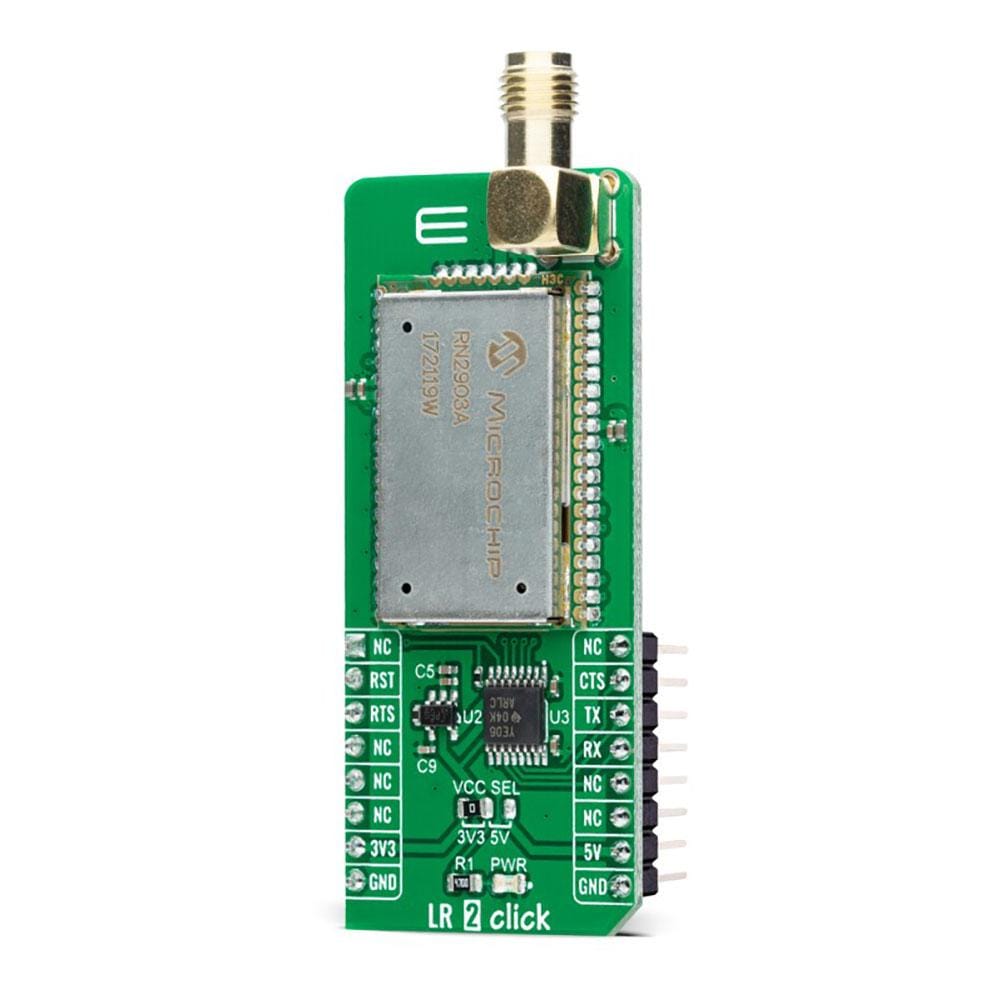
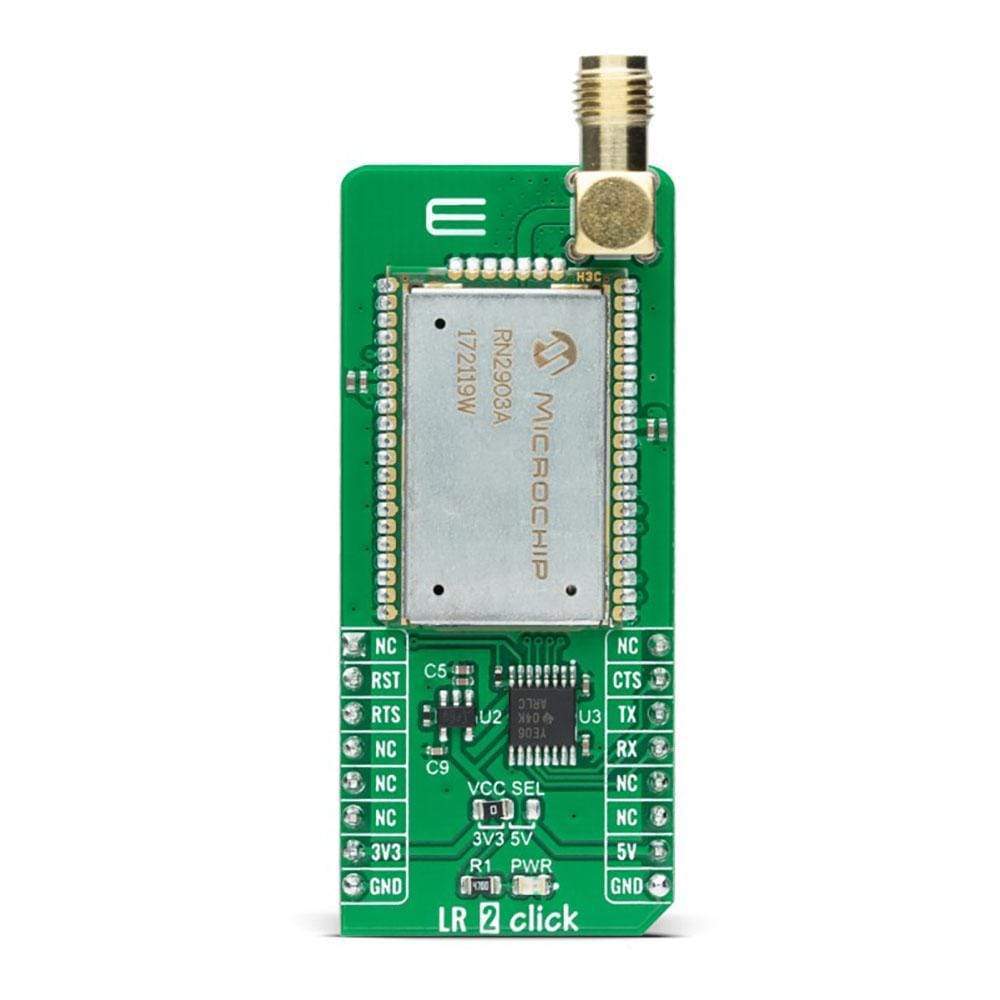
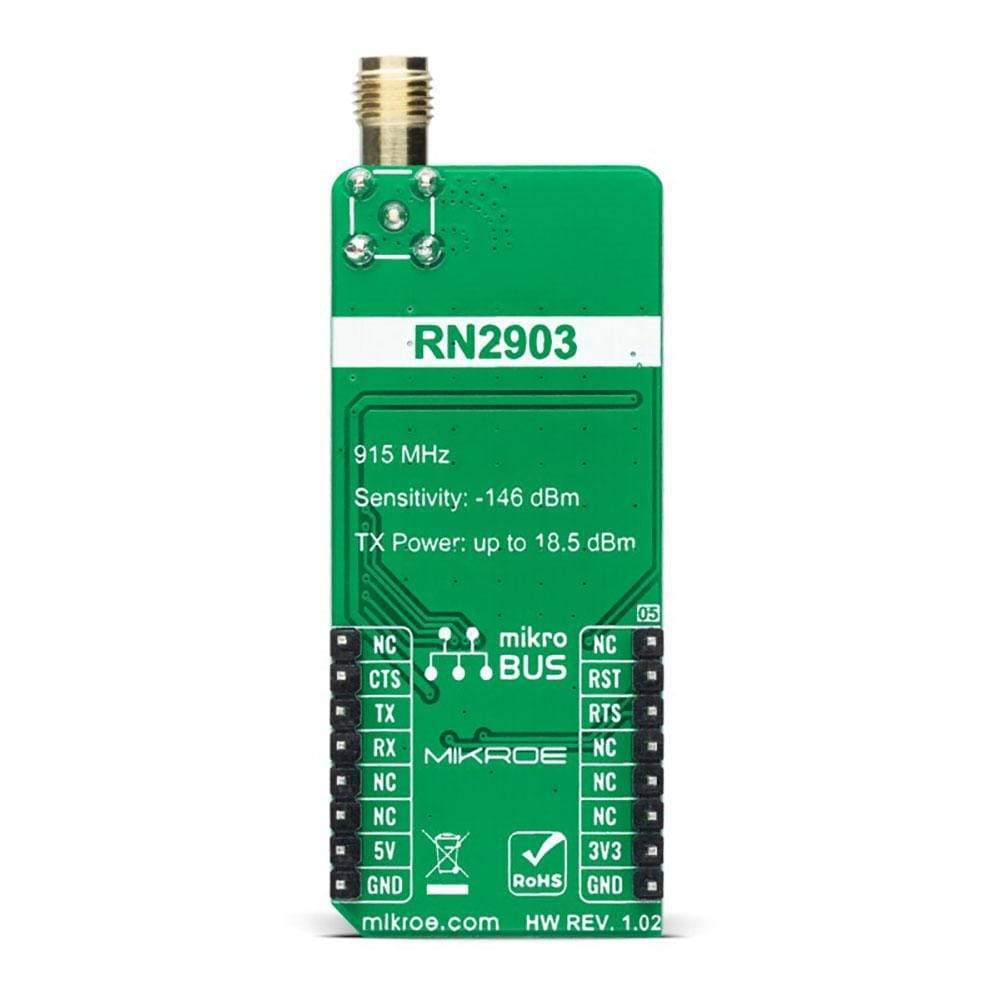
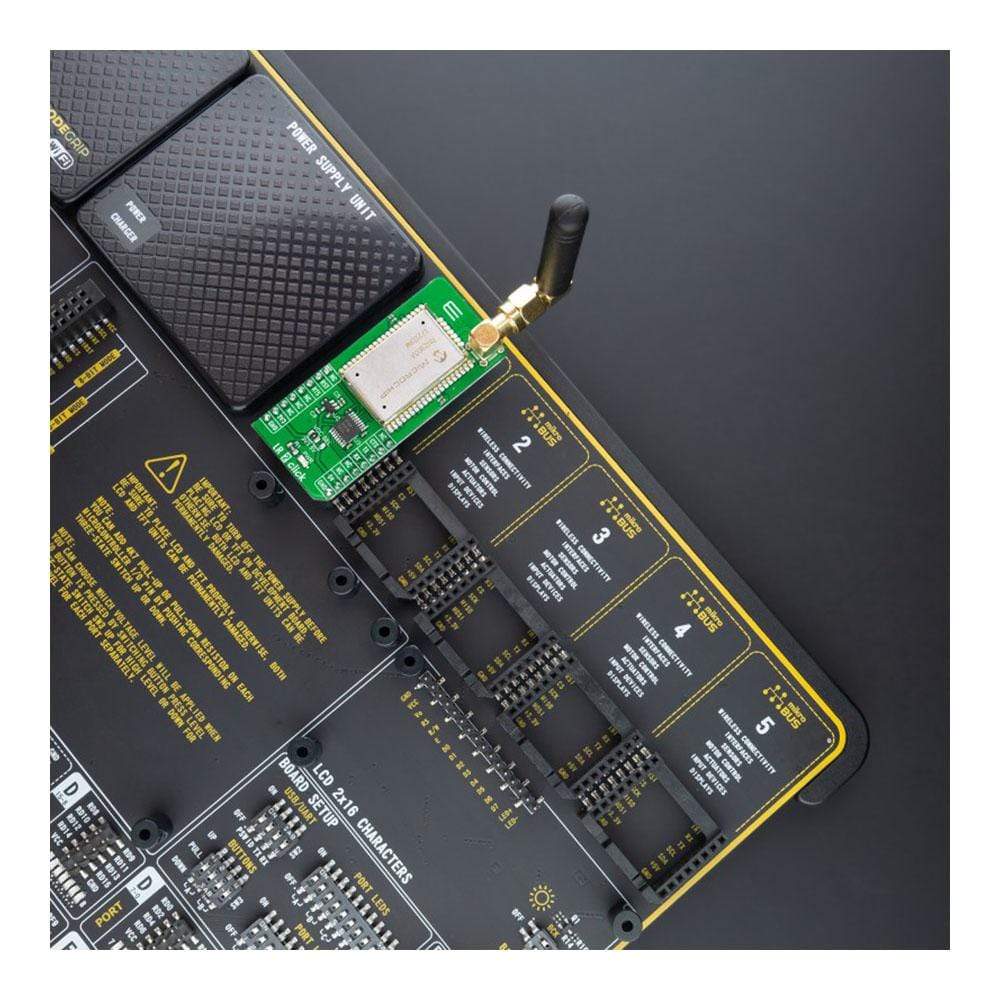
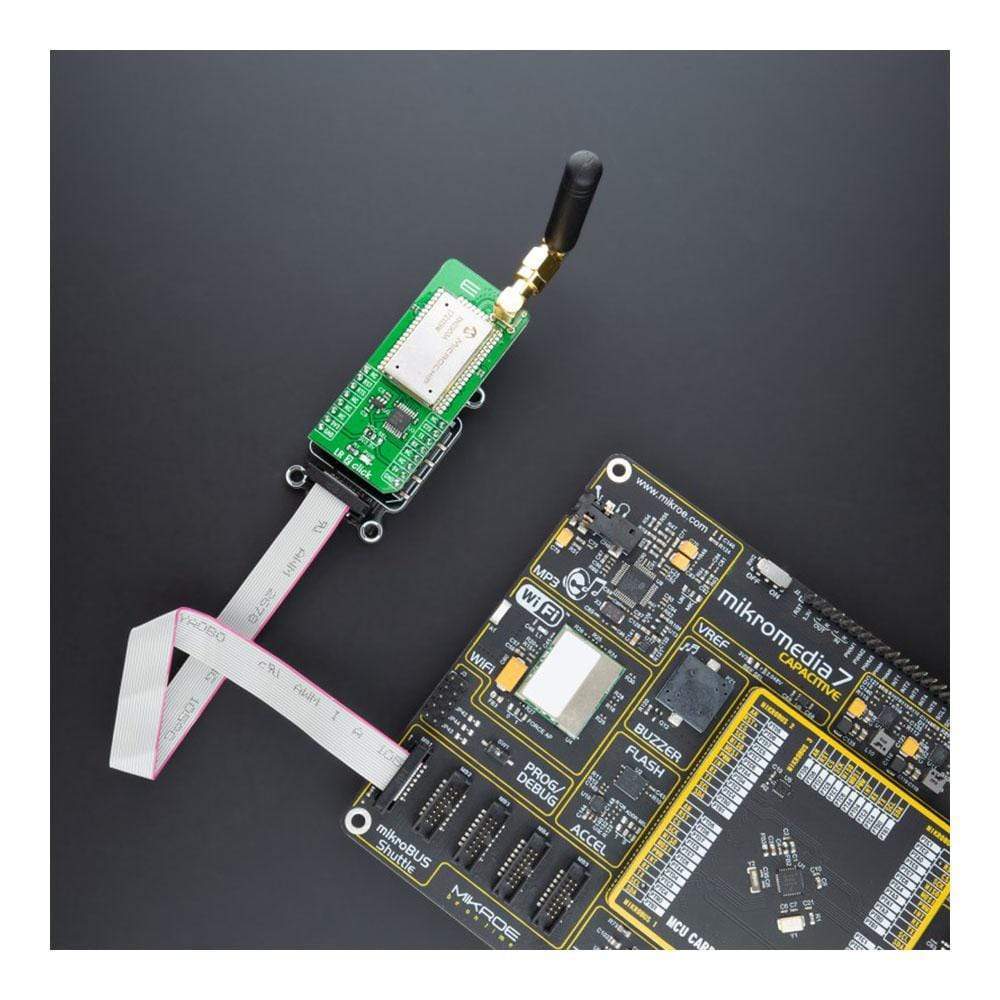

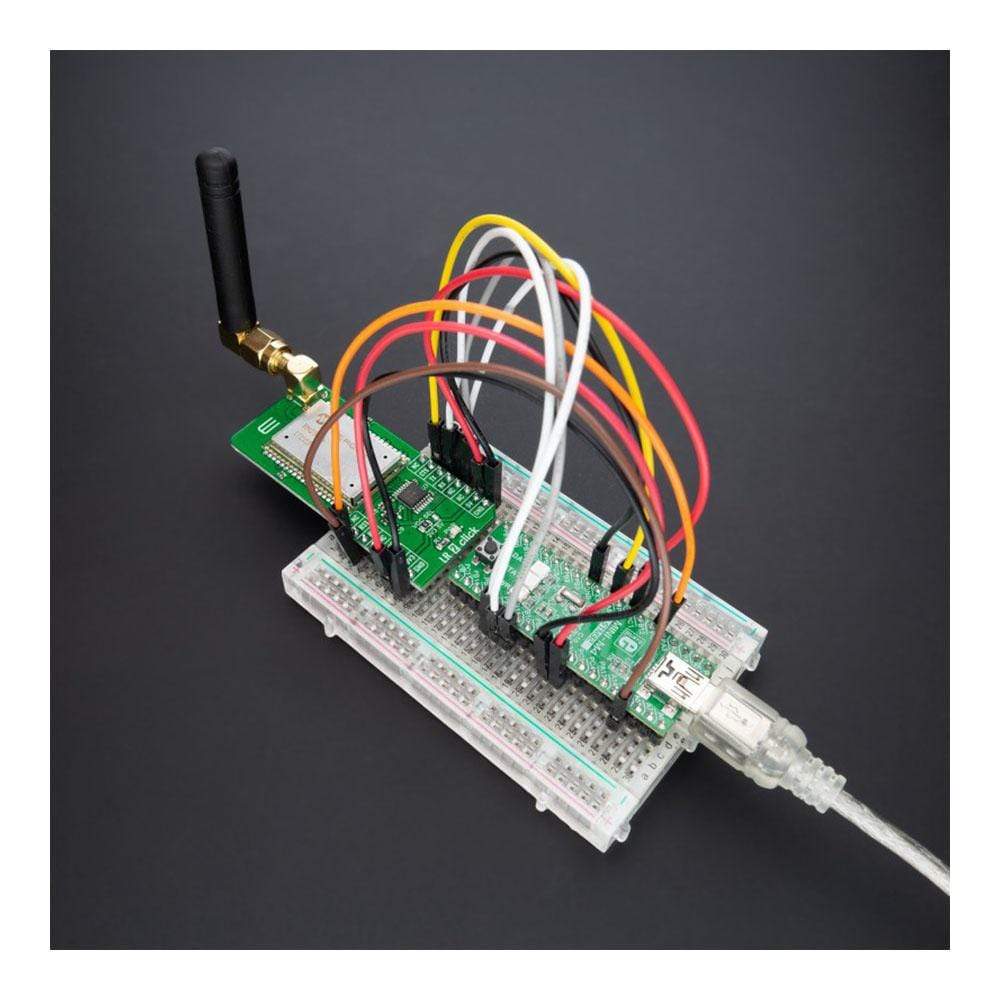
Overview
The LR 2 Click Board™ is a compact add-on board that contains a low-power, long-range transceiver. This board features the RN2903, RF technology-based SRD transceiver, which operates at a frequency of 915MHz from Microchip Technology. This Click Board™ features an embedded LoRaWAN Class A compliant stack, providing a long-range spread spectrum communication with high interference immunity. The RN2903 module is fully compliant with the United States (FCC) and Canada (IC) regulations combined with the advanced and straightforward command interface allowing easy integration into the final application. This Click Board™ offers an easy and reliable solution for developing highly integrated long-range IoT networks, security systems, alarm networks, building control, M2M interfaces, and similar applications that require simple and reliable networking solutions.
The LR 2 Click Board™ is supported by a mikroSDK compliant library, which includes functions that simplify software development. This Click Board™ comes as a fully tested product, ready to be used on a system equipped with the mikroBUS™ socket.
Downloads
La carte Click Board™ LR 2 est une carte complémentaire compacte qui contient un émetteur-récepteur longue portée à faible consommation. Cette carte est équipée de l'émetteur-récepteur SRD RN2903 basé sur la technologie RF, qui fonctionne à une fréquence de 915 MHz de Microchip Technology. Cette carte Click Board™ est dotée d'une pile intégrée conforme à la norme LoRaWAN de classe A, offrant une communication à spectre étalé longue portée avec une immunité élevée aux interférences. Le module RN2903 est entièrement conforme aux réglementations des États-Unis (FCC) et du Canada (IC), combiné à l'interface de commande avancée et simple permettant une intégration facile dans l'application finale. Cette carte Click Board™ offre une solution simple et fiable pour le développement de réseaux IoT longue portée hautement intégrés, de systèmes de sécurité, de réseaux d'alarme, de contrôle des bâtiments, d'interfaces M2M et d'applications similaires qui nécessitent des solutions de mise en réseau simples et fiables.
Le LR 2 Click Board™ est pris en charge par une bibliothèque compatible mikroSDK, qui comprend des fonctions qui simplifient le développement logiciel. Cette Click Board™ est un produit entièrement testé, prêt à être utilisé sur un système équipé du socket mikroBUS™.
| General Information | |
|---|---|
Part Number (SKU) |
MIKROE-4615
|
Manufacturer |
|
| Physical and Mechanical | |
Weight |
0.02 kg
|
| Other | |
Country of Origin |
|
HS Code Customs Tariff code
|
|
EAN |
8606027382420
|
Warranty |
|
Frequently Asked Questions
Have a Question?
Be the first to ask a question about this.

